Curriculum
- 12 Sections
- 101 Lessons
- 10 Weeks
Expand all sectionsCollapse all sections
- Introduction2
- Overview of Guidance Document6
- PFM Cycle9
- 3.1Introduction
- 3.2Who are the Stakeholders in the PFM Cycle and their Role
- 3.3Citizens/Civil Society
- 3.4Legislature (State House of Assembly)
- 3.5Executive
- 3.6PFM Oversights Agencies and PFM Implementation Agencies
- 3.7Others (Lender/Development Partners, Contractors, Other Countries)
- 3.8Module Wrap Up
- 3.9Quiz 340 Minutes11 Questions
- Citizens Role in PFM Cycle12
- 4.1Introduction
- 4.2Overview of Citizens’ Role and Engagement process in PFM Cycle
- 4.3Planning & Budget – Introduction and Policy Formulation
- 4.4Planning & Budget – Medium Term Planning and Budgeting
- 4.5Planning & Budget – Annual Budget Preparation
- 4.6Budget Execution
- 4.7Accounting & Reporting
- 4.8External Scrutiny & Audit
- 4.9Tools/Mechanism for Citizens Engagement Part 1
- 4.10Tools/Mechanism for Citizens Engagement Part 2
- 4.11Module Wrap Up
- 4.12Quiz 450 Minutes10 Questions
- PFM Key Concepts17
- 5.1Introduction and Key PFM Concepts
- 5.2National Chart of Accounts – Part 1 Overview
- 5.3National Chart of Accounts – Part 2 Administrative segment
- 5.4National Chart of Accounts – Part 3 Economic segment
- 5.5National Chart of Accounts – Part 4 Function and Fund segments
- 5.6National Chart of Accounts – Part 5 Geo-Location and Programme segments
- 5.7Fiscal Performance – Part 1 Key Concepts
- 5.8Fiscal Performance – Part 2 Examples
- 5.9Fiscal Forecasting
- 5.10Value for Money – Part 1 Overview and Economy Metrics
- 5.11Value for Money – Part 2 Efficiency and Effectiveness Metrics
- 5.12Cash vs Accrual basis of Budgeting and Accounting – Part 1 Key Concepts
- 5.13Cash vs Accrual basis of Budgeting and Accounting – Part 2 Examples
- 5.14Budgeting Techniques
- 5.15Other Key PFM Concepts and Terms
- 5.16Quiz 510 Minutes13 Questions
- 5.17Module Wrap Up
- MTEF14
- 6.1Introduction
- 6.2What is an MTEF – Part 1 Overview and MTFF
- 6.3What is an MTEF – Part 2 MTBF and MTSSs
- 6.4What information is provided in the MTEF/FSP document – Part 1 Overview and EFU
- 6.5What information is provided in the MTEF/FSP document – Part 2 FSP and BPS
- 6.6Key guidance for Non-State Actors on interpreting the information in the MTEF Document – Part 1 Overview and Fiscal Performance
- 6.7Key guidance for Non-State Actors on interpreting the information in the MTEF Document – Part 2 Debt and Fiscal Framework
- 6.8Key guidance for Non-State Actors on interpreting the information in the MTEF Document – Part 3 Mineral Ratio
- 6.9Key guidance for Non-State Actors on interpreting the information in the MTEF Document – Part 4 Fiscal Framework
- 6.10Key guidance for Non-State Actors on interpreting the information in the MTEF Document – Part 5 Fiscal Risks and Sector Allocations
- 6.11How to use the MTEF to hold Government to Account
- 6.12Summary of Key Issues
- 6.13Module Wrap Up
- 6.14Quiz 620 Minutes10 Questions
- Citizens Budget11
- 7.1Introduction
- 7.2What is Budget and what is Citizens Budget – Part 1 Content of the CB
- 7.3What is Budget and what is Citizens Budget – Part 2 Importance of the CB
- 7.4Information Provided in CB – Part 1
- 7.5Information Provided in CB – Part 2
- 7.6Interpreting Information provided in CB
- 7.7How to use the CB to hold Government to Account – Part 1
- 7.8How to use the CB to hold Government to Account – Part 2
- 7.9Summary of Key Issues
- 7.10Module Wrap Up
- 7.11Quiz 750 Minutes11 Questions
- BPR11
- 8.1Introduction
- 8.2What is a BPR?
- 8.3What information is provided in the BPR documents?
- 8.4Key guidance for Non-State Actors on interpreting the information in the BPR Document – Part 1 The Four Quaterly Reports
- 8.5Key guidance for Non-State Actors on interpreting the information in the BPR Document – Part 2 Assessing Revenue Performance
- 8.6Key guidance for Non-State Actors on interpreting the information in the BPR Document – Part 3 Assessing Expenditure Performance
- 8.7How to use the BPR to hold Government to Account – Part 1 Overview
- 8.8How to use the BPR to hold Government to Account – Part 2 Examples
- 8.9Summary of Key Issues
- 8.10Module Wrap Up
- 8.11Quiz 850 Minutes12 Questions
- CAR11
- 9.1Introduction
- 9.2What are Audited Financial Statements and what is CAR
- 9.3Information Provided in CAR – Part 1 Budget Out-Turn Recurrent Revenues
- 9.4Information Provided in CAR – Part 2 Budget Out-Turn Expenditure and IGR Details
- 9.5Information Provided in CAR – Part 3 Other Schedules
- 9.6How to interpret information in the CAR
- 9.7Using CAR to hold Government to Account – Part 1
- 9.8Using CAR to hold Government to Account – Part 2
- 9.9Summary of Key Issues
- 9.10Module Wrap Up
- 9.11Quiz 910 Minutes0 Questions
- Procurement9
- 10.1Introduction
- 10.2What is Public Procurement (including E-procurement)
- 10.3What procurement information is publicly available
- 10.4Interpreting Information
- 10.5Leveraging Procurement Information for Accountability – Part 1 Procurement Law
- 10.6Leveraging Procurement Information for Accountability – Part 2 OCDS
- 10.7Summary of Key Issues
- 10.8Module Wrap Up
- 10.9Quiz 910 Minutes0 Questions
- Practical Implementation Experiences of Citizens Engagement8
- 11.1Introduction
- 11.2Kano State – Engagement on MTEF Part 1
- 11.3Kano State – Engagement on MTEF Part 2
- 11.4Kaduna State – Town Hall Meetings/CDC Part 1
- 11.5Kaduna State – Town Hall Meetings/CDC Part 2
- 11.6Jigawa State – Engagement on the Audited Financial Statements
- 11.7Quiz 1110 Minutes0 Questions
- 11.8Ebonyi State
- Wrap Up1
Overview of Modules
Next
